After getting back to Bucharest and saying goodbye to my friend, I go on another walking tour—this one is called “From Monarchy to Communism” and goes through the history of Romania’s four kings, Romania’s involvement in the two world wars, the communist regime, the Romanian revolution, and what came after. All the while, the young and very sympathetic guide tells us relevant stories about the buildings we see. The tour is very well put together, history told in an engaging and entertaining way. A big thank you to our lovely guide Maria.
I will not describe Romanian history here—the likelihood of making mistakes is too big when just recounting the stories I heard, and I might have forgotten important parts. Instead, I’ll try to relay some cool, interesting and funny facts about the buildings and other structures we encounter.
For example, I learn that the roof of the Odeon Theatre on Calea Victoriei is retractable, so in the summer, you can watch a play with the moon and stars above you. The Ottoman sculpture in front of the theatre was never approved to be built by any mayor of the city, so no-one seems to know how it came to be here. That’s Romania for you.
We look at a few buildings that don’t look too good, and Maria explains to us that buildings that aren’t safe in an earthquake used to be marked by a big red dot before this information was widely available online. Trying to get around the issue, some owners who wanted to rent or sell their apartments just painted the red dots over with black paint, or removed the plaques altogether. We can see a few examples of that in a building that is by now abandoned and empty anyway. The internet has made cheating that way impossible as the information is now online.
The English Passage is named after what used to be the English Hotel. It was a fairly run-down hotel with shared bathrooms etc, so to make it profitable, it was converted into a brothel. The prostitutes were legal business women in Romania, and this brothel had a good reputation with clean and healthy women. They even had a subscription card for several visits that were signed for each visit. Now, there is no brothel anymore; instead people live in the building’s apartments. We walk through the passage and it’s very seedy; however, the facade on Calea Victoriei is very well maintained and freshly painted. Maria joked again, “that’s Romania.”
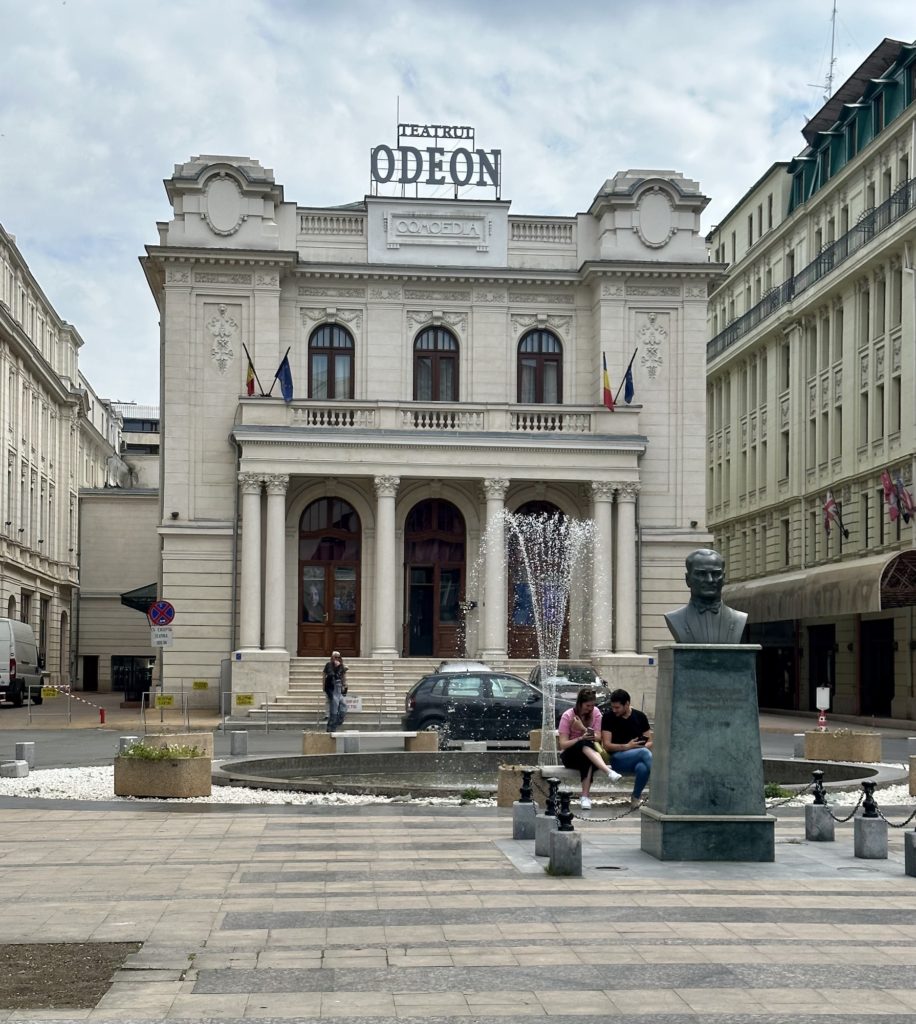
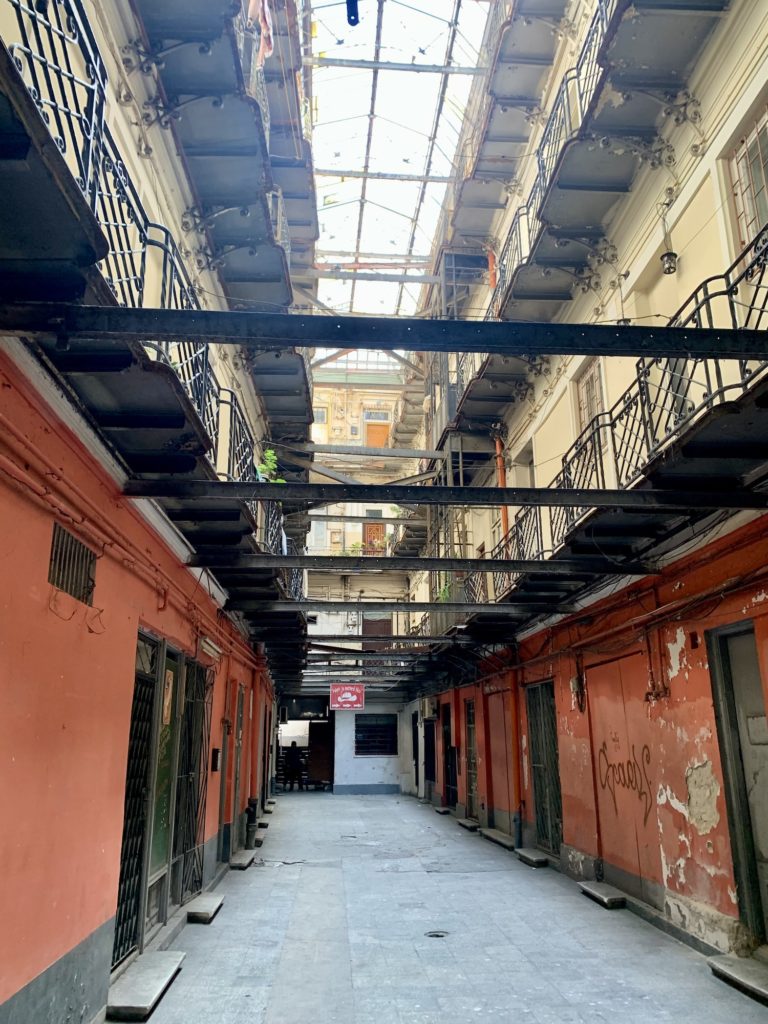
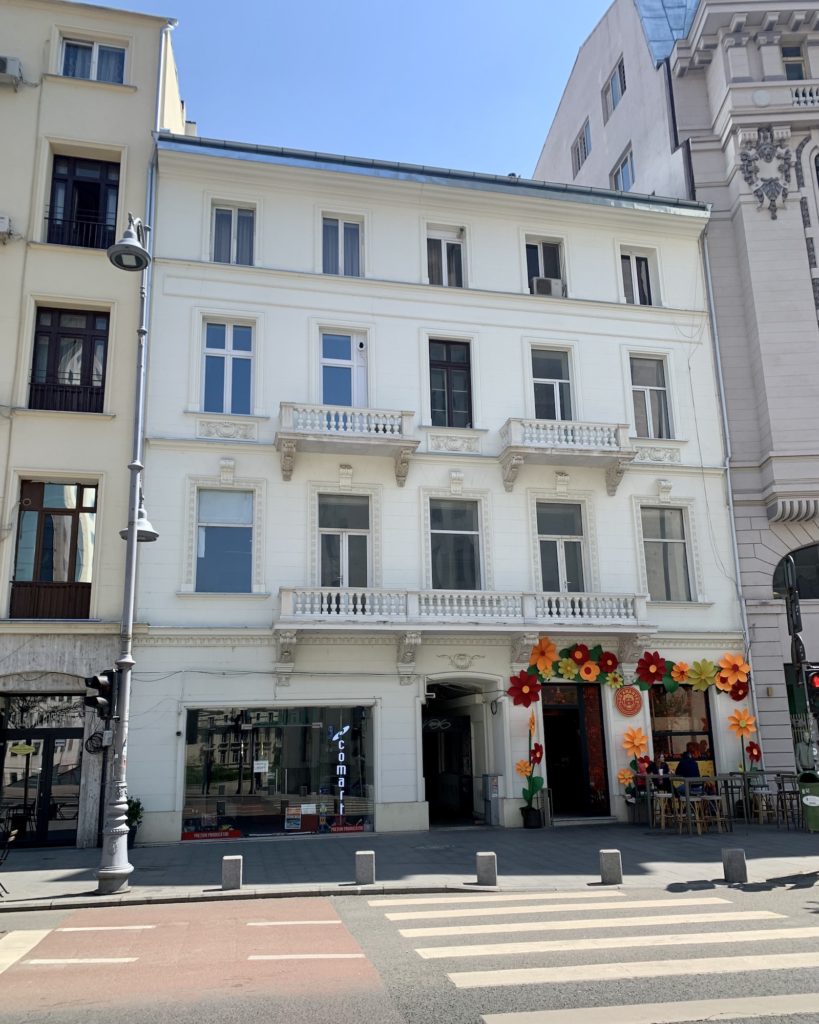
We walk past the Sala Palatului, which is now a concert hall but a few decades ago, it was a communist conference center. The hall is surrounded by typical communist-era concrete buildings, and our trusted guide explains to us that they were erected as a veil for the old buildings constructed by the kings of Romania, because they didn’t want to be reminded of the era that came before them. When you look closely, you can see a section between two buildings that is very shallow, in fact, you can see right through the balcony windows of the top floor and see blue sky. It turns out, they built a fake facade between the two apartment buildings made to look like balconies. When there were communist conferences at the time, there would be tv sets and lights turned on to make this section appear as if it was lived in. Just one more story about the deceptions of communist or any dictatorial or tyrant regimes.
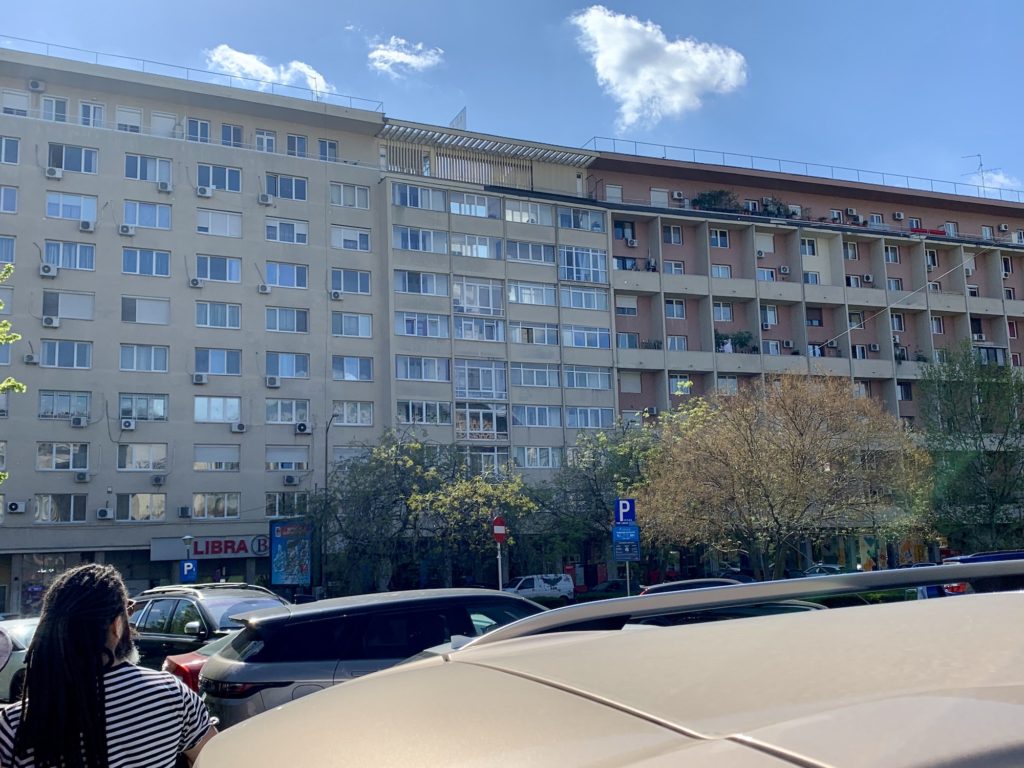

On our way to the Revolution Plaza, we walk by the statue of King Carol I on a horse. The first thing one notices when walking by is that the horse is unmistakably male. Maria also made us aware that the horse’s tail is raised as if it was shitting. She explains that this statue was altered to a Lenin statue during communism, but after the revolution, the Romanian people wanted to change it back to their first king, understandably. If they had reconstituted it exactly the way it was before, they would have had to pay extra royalties to the artist’s family due to copyrights. So, instead they modified it slightly, adding big balls and raising its tail.
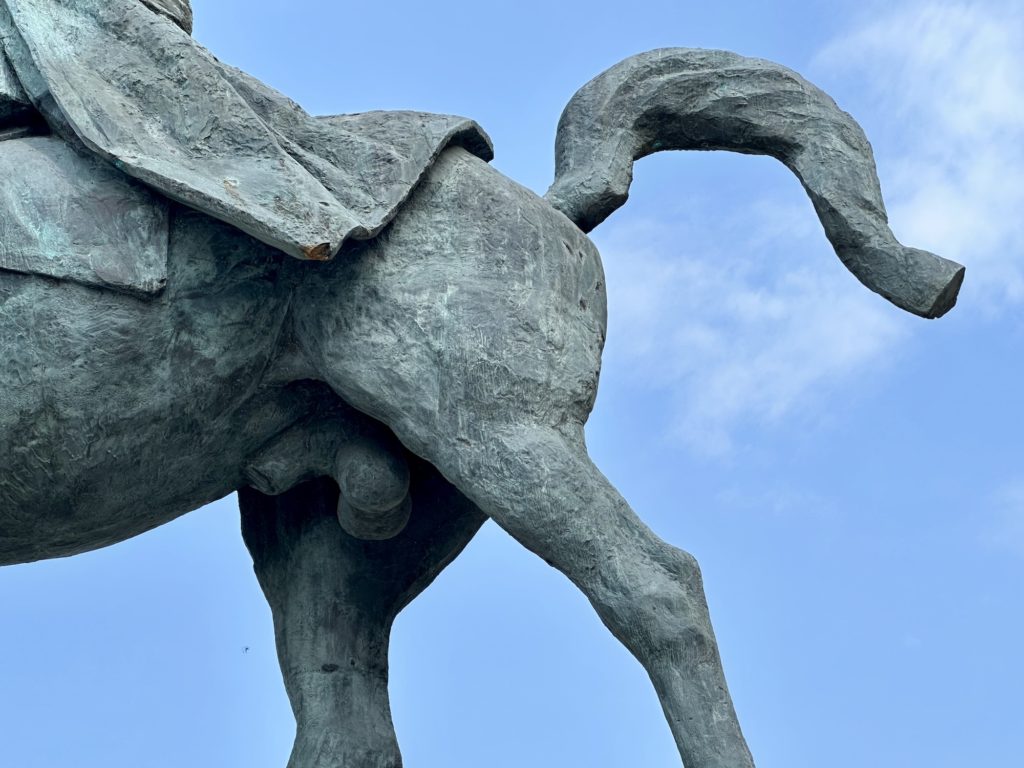

She also tells us that King Carol incorporated clocks into every building he commissioned during his reign. As a German, he had a hard time with the typical unpunctuality of the Romanians, so he had every clock in the city set 15 minutes ahead of the actual time, in hopes that people would then show up on time. She wasn’t sure if that ploy actually worked, and it looks like the clock behind his statue doesn’t work anymore at all.
The tour ends at the Revolution Plaza with a monument that, as per the artist’s intent, symbolizes the purity of the Romanian people piercing the cage of communism. After learning that two billion Euro were spent to build this monument and plaza, the Romanians felt that was an outrageous amount of money for an “impaled potato”. Apparently, when people set up to meet here, they just say, they’ll meet “at the potato.”
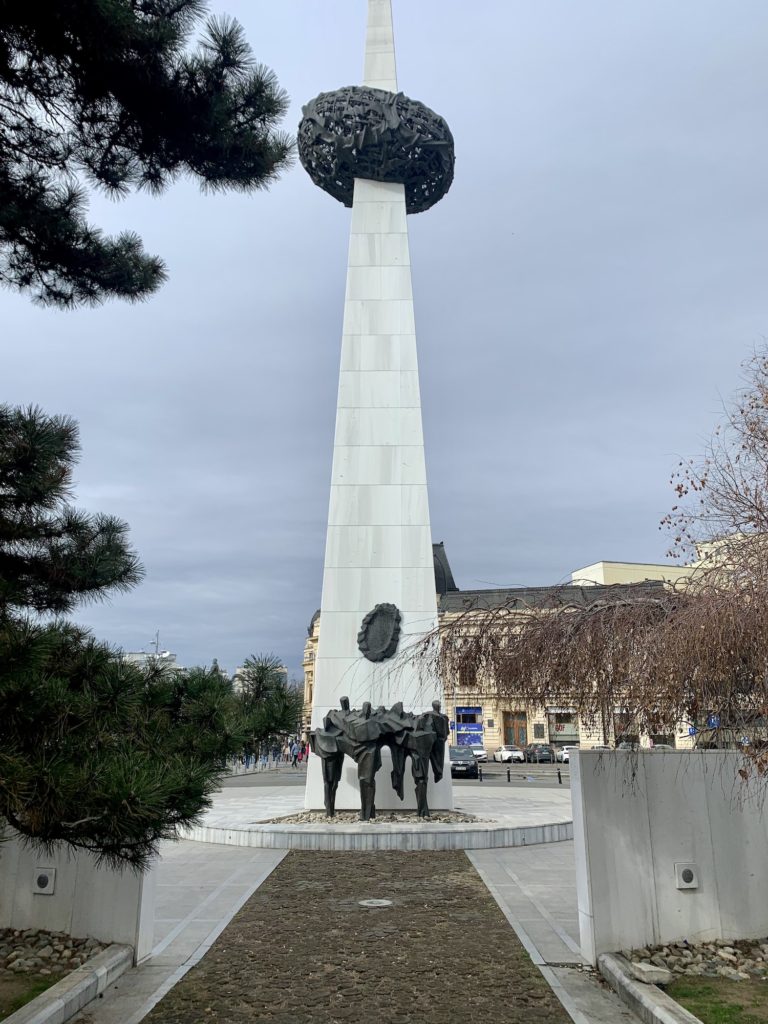
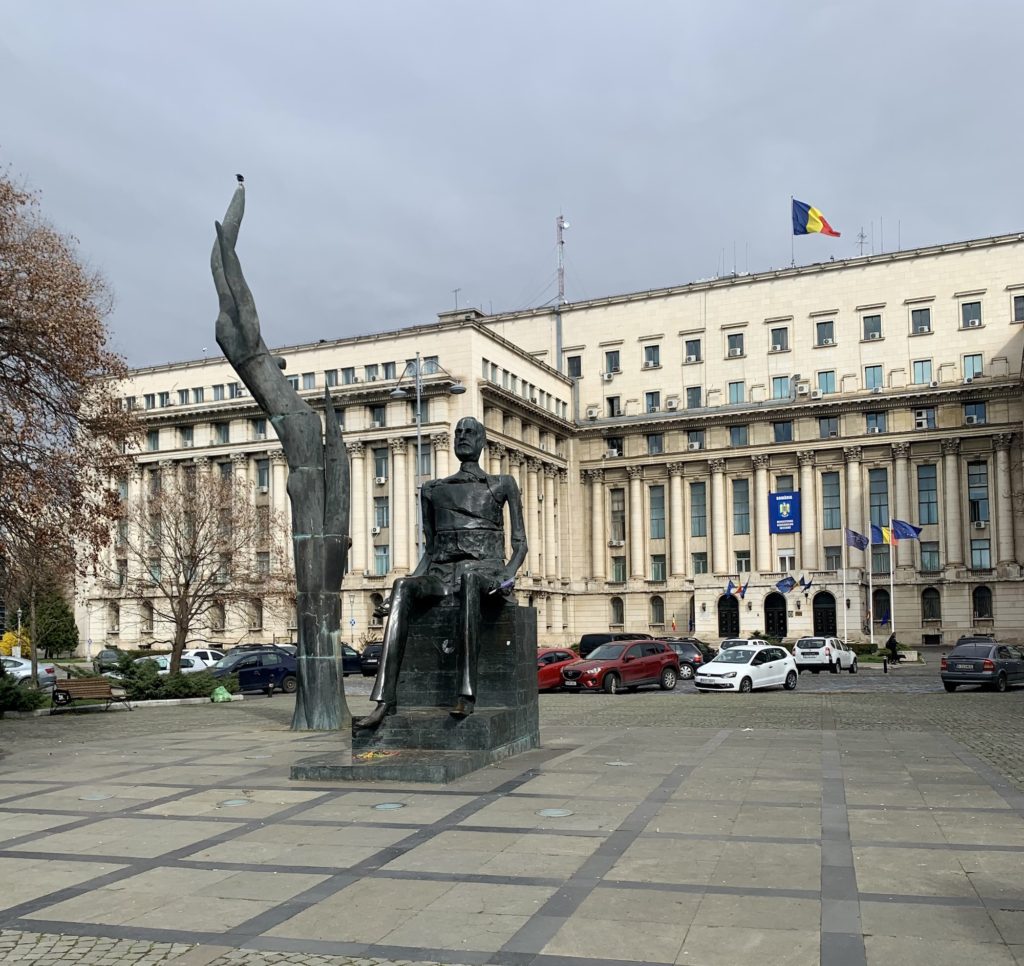
The tour was definitely worthwhile to learn about the history and get a few new anecdotes for my arsenal. Highly recommended.

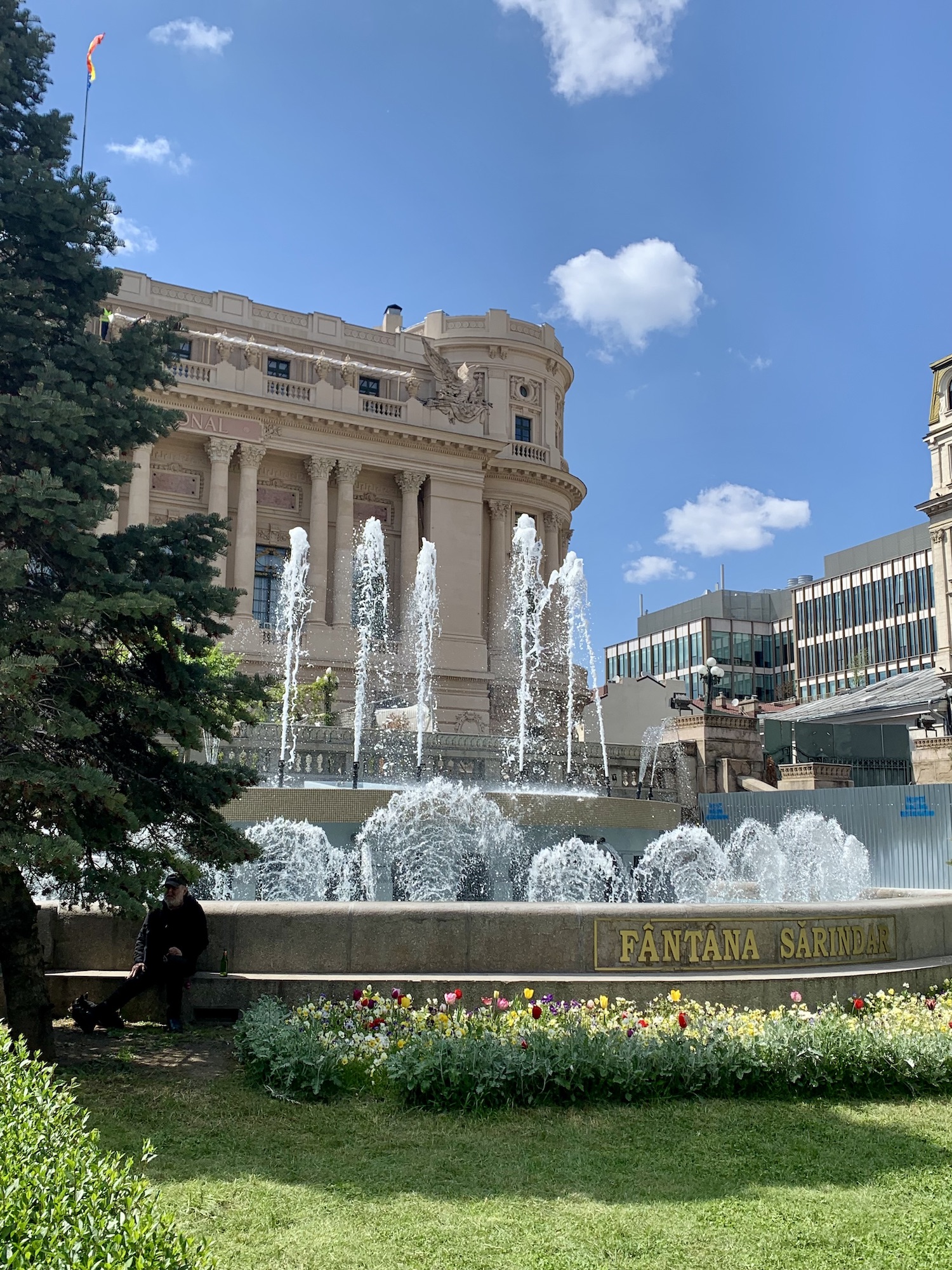
Interesting city. Glad you had a good guide. Makes all the difference!
C
The Odeon theatre is similar to the old bourse in Leipzig. A.